BALTIMORE, Md. – Hyundai’s spunky subcompact crossover is back for a second round. No surprise there; the original was pretty darned good. For 2024, Hyundai looks to correct some of the Kona’s inherent shortcomings by offering a bigger, roomier and more tech-laden car. Is it all for the better? Hyundai invited me to my old stomping grounds in Baltimore to find out.
2024 Kona details dropped earlier this year, but here are the basics. The car grew nearly six inches in length and an inch in width — still squarely in the subcompact size range but noticeably larger than before. This addresses one of the key complaints customers had regarding the previous model: a lack of rear seat room. With that extra length (and some cleverness in further clamshelling the front seatbacks) comes three inches of additional rear legroom. The cargo area got a significant upgrade too, offering an additional six cubic feet of space with the seats up, for a total of 25.2. Bottom line: It’s bigger, and you’ll notice.
The Kona EV returns for 2024, but production examples aren’t ready for showrooms just yet; nor is there a dedicated N model at launch. In fact, Hyundai hasn’t yet confirmed that it will return, whether as a hotter turbocharged four-cylinder like before, or something electrified. For now, we can only assume, but we can say this: Hyundai’s team is very enthusiastic about motorsport, and anything that can tie the brand to driving excitement is on the table. Cross your fingers.
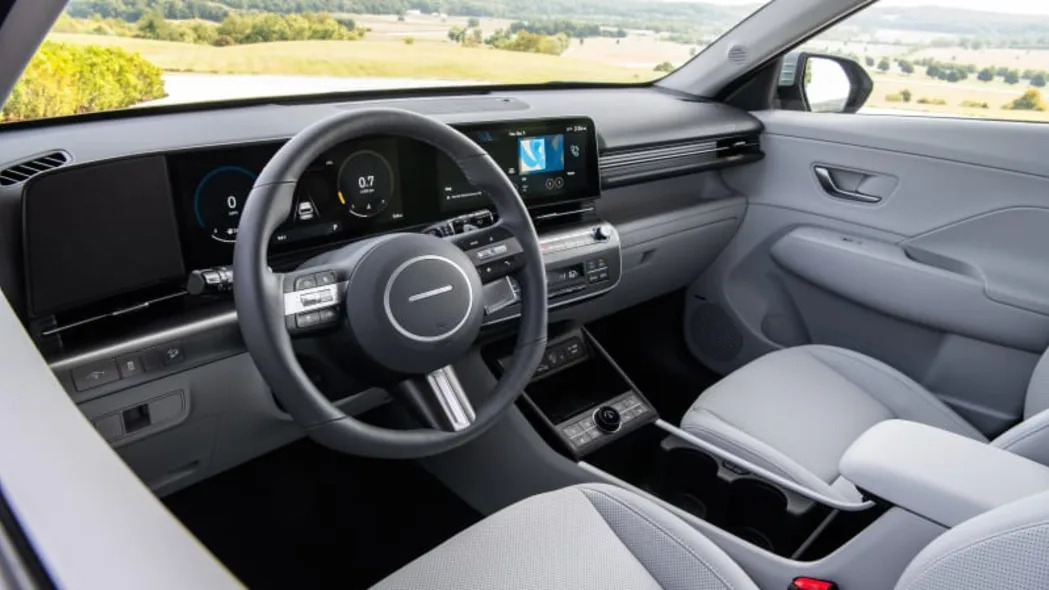
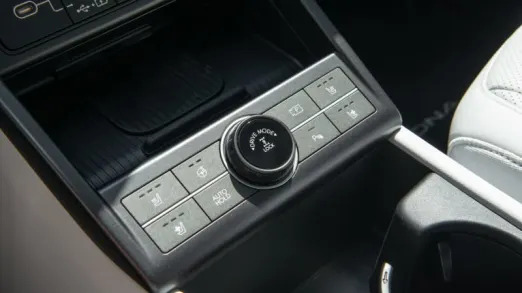
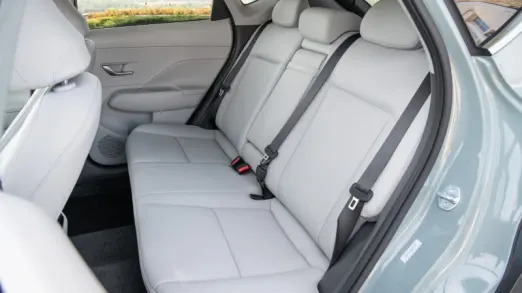
The previous-gen car’s original two powertrains carry over pretty close to unchanged. The base engine (SE, SEL models) is a 2.0-liter four-cylinder that makes 147 horsepower and 132 pound-feet of torque. It’s paired with a continuously variable transmission. Meanwhile, the N Line and Limited trims get a 1.6-liter turbocharged four-cylinder that makes 190 horsepower and 195 pound-feet of torque. This motor is paired to an eight-speed automatic transmission. Bye-bye, dual-clutch; we hardly knew ye.
Hyundai brought two versions of the Kona for us to sample: the Limited and N Line. Both are based on the same 1.6-turbo and all-wheel drive powertrain, but the N Line looks sportier with a big spoiler, body-color fender cladding and a neat twin exhaust poking out under the rear bumper. Both come with the new, no-console-shifter interior treatment and dual 12.3-inch screens (the SE and SEL get just one alongside a smaller 4.2-inch color cluster; aww) along with Bose audio and wired Android Auto and Apple CarPlay. As in Hyundai’s other current offerings, the high-end infotainment lacks wireless smartphone mirroring, but in this case, Hyundai is on track to offer an over-the-air update to add it to navigation-equipped models starting soon (as in, expect it by the end of 2024).
I set off after fiddling with the driver safety features (of which there are a great multitude, including lane keeping/lane following, Hyundai’s basic Highway Drive Assist (No word on HDA II for Kona at this time), driver attention warning and the many other sundries we’ve come to expect as standard equipment. The route takes me north out of the city into the wealthy exurbs of Baltimore County, populated mostly by trees, impatient rich folks and speed cameras – clearly the impatient folks aren’t quite rich enough to outfox the Maryland legislature.
I’ve been a fan of the Kona since its release, especially if we’re talking about this exact powertrain setup. The naturally aspirated base engine was always adequate but underwhelming, while the turbo/all-wheel drive felt punchy enough to pass for sporty. Hyundai made every effort to retain that character, but the new model’s added size takes a bit of the edge off the Kona’s previously sharper responses. It feels even taller and heavier than it is at times; the outward push in nearly all directions (it's really no taller unless you count the slighter taper to the rear) resulted in a weight gain of about 200 pounds for the Limited model, which Hyundai pins at 3,505 pounds with all-wheel drive. Remember, this thing still rides on a decidedly subcompact wheelbase — just shy of 105 inches — and yet it weighs nearly as much as my old V6 Mazda6. Come to think of it; that thing had nearly as much cargo space too.
The powertrain also takes a hit. Previously, the 1.6-liter turbo was paired with Hyundai’s compact dual-clutch transmission. That old seven-speed certainly wasn’t perfect, but it felt snappier and less reluctant to downshift with a little encouragement on the “go” pedal. The new eight-speed feels a bit lethargic by comparison. Outside of “Sport” mode, it will cling to higher gears to the point of nearly lugging the engine, imparting some cabin drone in low-speed driving. There’s no shortage of tight, snaking roads with abundant elevation change around these parts; combining a corner exit and climb-out without some intentional throttle will leave you wondering what happened to that turbocharger.
So, it may have lost a step, but bear in mind the N model came relatively late in the previous generation’s lifecycle. Because Kona launched without a dedicated performance variant, the turbo, all-wheel drive model had to carry water for any of Hyundai’s sporty aspirations. This time around, we know that an N model is borderline inevitable. Following that logic, the Limited (and by extension, the N Line) don’t need to scratch that particular itch.

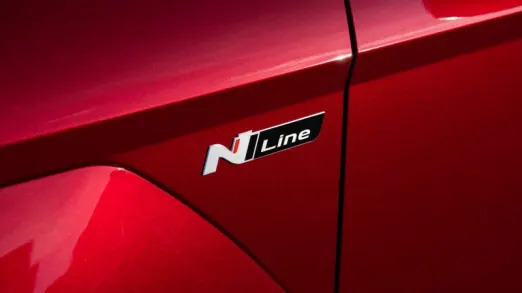
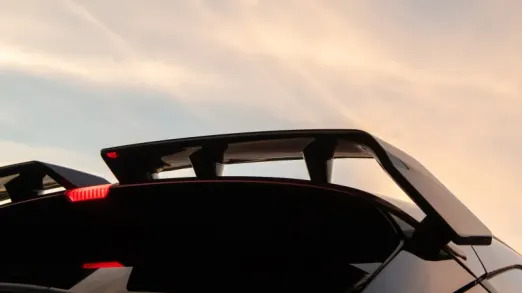
After all, what Hyundai was most concerned about when redesigning the Kona was making it more practical and attractive to young crossover buyers who might appreciate its nimble character and punchy high-end powertrain, but mostly want something that actually fits all of their luggage. The previous Kona was among the babiest of baby crossovers. Even now, with another five inches of overall length to work with, it’s still nearly half a foot shorter than the smaller offerings in the next segment up, like the Jeep Compass and Dodge Hornet.
The upsizing makes a difference, though. Sitting in the rear seat is far less of a penalty box experience this time around, and while the additional six cubes of cargo volume may not seem like much, as Riswick notes, the old Kona needed just about all the help it could get. Ditching the console-mounted shift lever in favor of the (oddly chunky but surprisingly intuitive) column-mounted shifter makes the Kona’s front seats feel a lot roomier, even if they’re really not, plus it makes the whole dash look less cluttered. The trick cupholders (a touch borrowed from the Palisade) and corresponding convertible storage area contribute to that sensation, too.
But there’s another elephant to address here. I already noted that Kona launched without a performance variant; back in 2018, it also launched without a variant that cost more than $30,000 before options. Blame physical bloat, inflation or even aliens if you’re so inclined, but no matter the reason, the top-of-the-line Kona is now pushing $33,000, which means there’s some heavier overlap with the aforementioned near-compact Mopars, which start at about $30K.
The 2024 Hyundai Kona represents two steps forward and a half step back. Whether you opt for the cheap-and-cheerful base model or the loaded-up, tech-laden Limited, you’re getting a solid value for your money. Enthusiasts, you’ll want to hold out for an N. Don’t expect an all-wheel drive miracle, but the rest of the package should be worth the wait; let's hope Hyundai gives it the green light.
Related Video

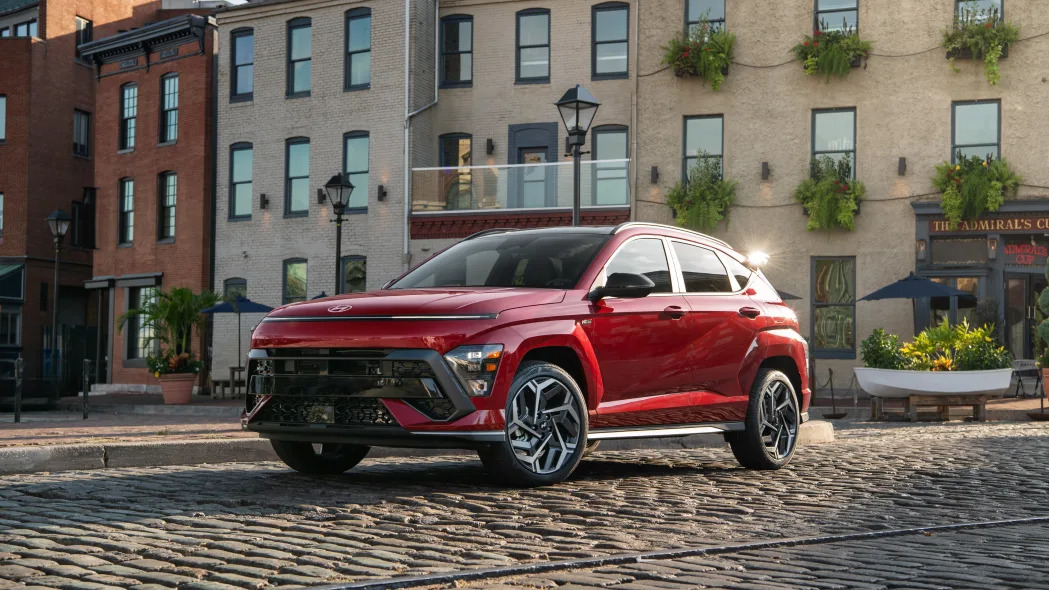









Sign in to post
Please sign in to leave a comment.
Continue